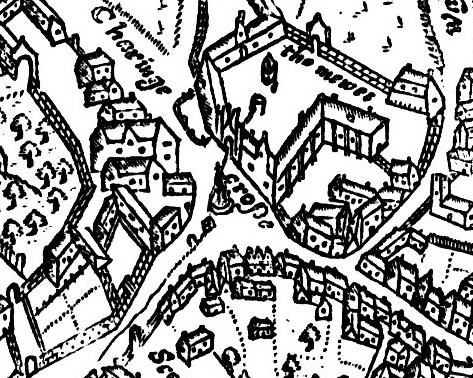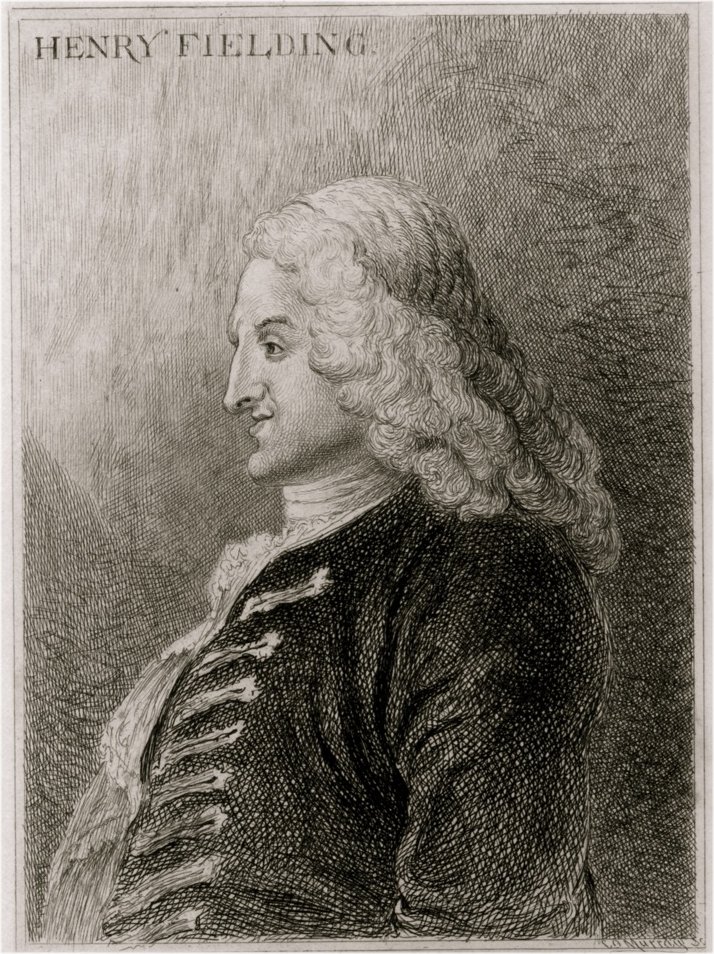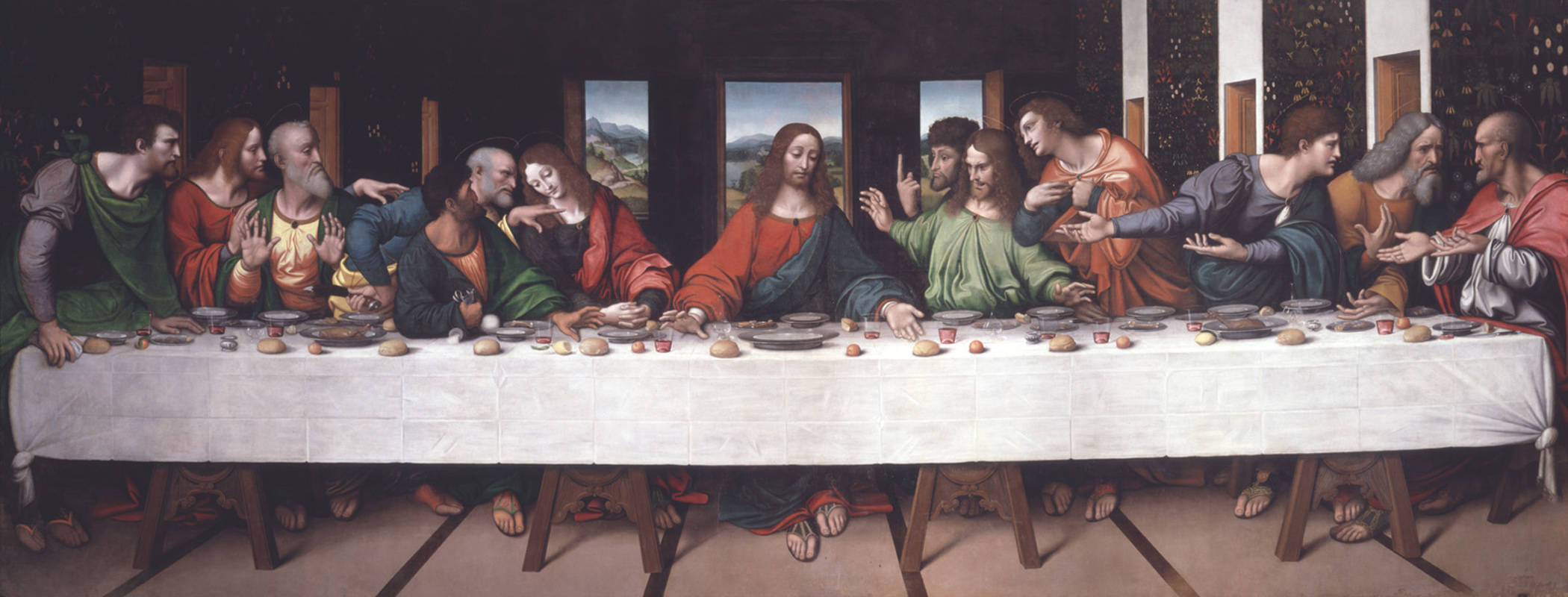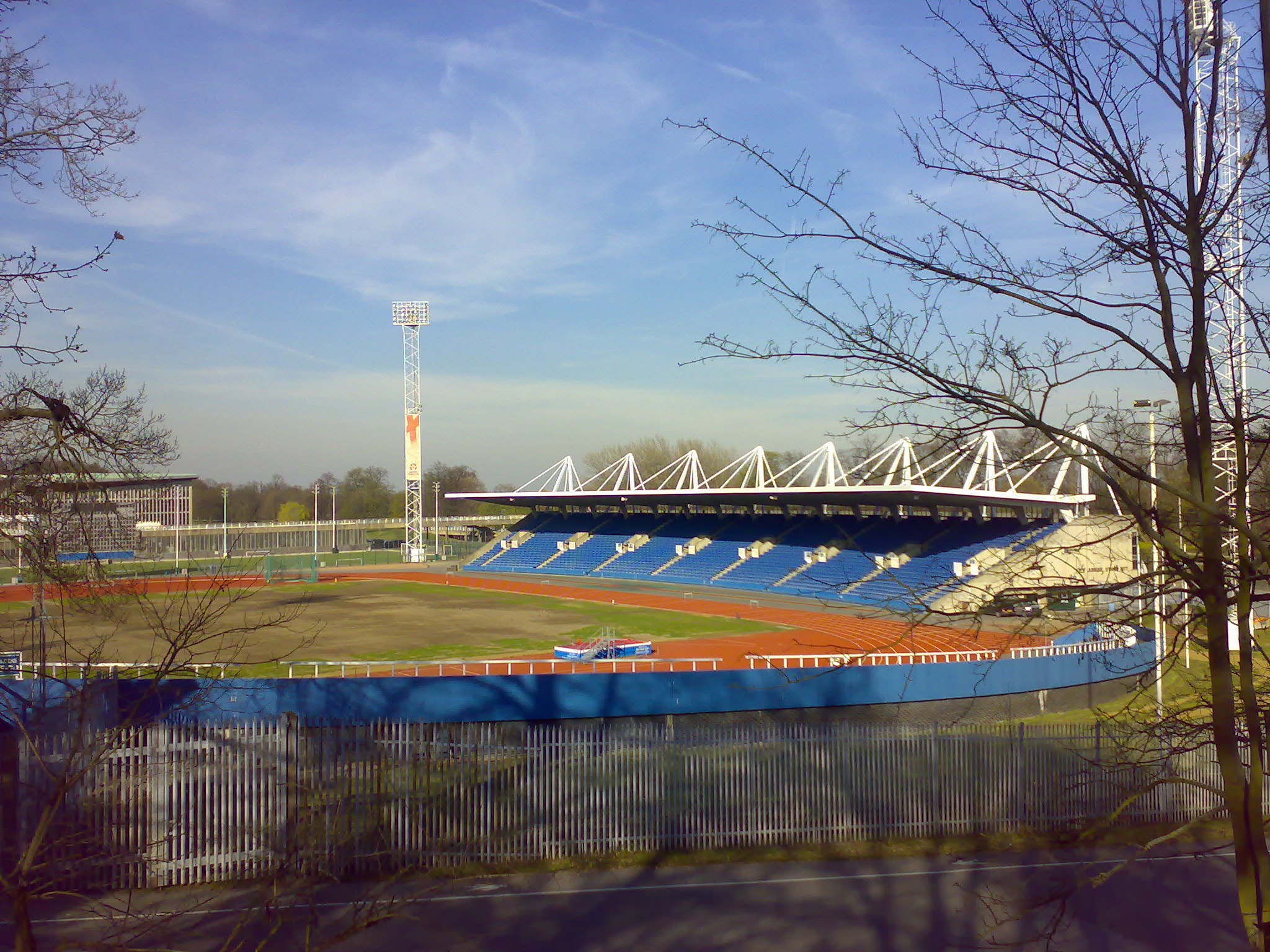|
William Frederick Woodington
William Frederick Woodington (10 February 1806 – 24 December 1893) was a notable English painter and sculptor. Life Woodington was born in Sutton Coldfield, Warwickshire (possibly at the Three Tuns in High Street), and was articled at the age of 12 to an engraver Robert William Sievier (1794–1865). When Sievier turned his hand to sculpture four years later, Woodington followed suit. He exhibited at the Royal Academy from 1825, was appointed curator of the Academy's School of Sculpture in 1851, and was elected an Associate in 1876. Woodington died at Brixton Hill aged 87 in 1893 and was buried at West Norwood. His son, also called William Frederick Woodington, (1830–1922) was similarly a sculptor. They worked together on the bronze panel of Battle of the Nile and plinth of Nelson's Column. William Jr. also worked on statues for St Basil, St Gregory, St Chrysostom and St Anthanasias in the dome of St Paul's Cathedral and the memorial to Lord Napier of Magdala in the cry ... [...More Info...] [...Related Items...] OR: [Wikipedia] [Google] [Baidu] |
William F
William is a male given name of Germanic origin.Hanks, Hardcastle and Hodges, ''Oxford Dictionary of First Names'', Oxford University Press, 2nd edition, , p. 276. It became very popular in the English language after the Norman conquest of England in 1066,All Things William"Meaning & Origin of the Name"/ref> and remained so throughout the Middle Ages and into the modern era. It is sometimes abbreviated "Wm." Shortened familiar versions in English include Will, Wills, Willy, Willie, Bill, and Billy. A common Irish form is Liam. Scottish diminutives include Wull, Willie or Wullie (as in Oor Wullie or the play ''Douglas''). Female forms are Willa, Willemina, Wilma and Wilhelmina. Etymology William is related to the given name ''Wilhelm'' (cf. Proto-Germanic ᚹᛁᛚᛃᚨᚺᛖᛚᛗᚨᛉ, ''*Wiljahelmaz'' > German ''Wilhelm'' and Old Norse ᚢᛁᛚᛋᛅᚼᛅᛚᛘᛅᛋ, ''Vilhjálmr''). By regular sound changes, the native, inherited English form of the name shoul ... [...More Info...] [...Related Items...] OR: [Wikipedia] [Google] [Baidu] |
Trafalgar Square
Trafalgar Square ( ) is a public square in the City of Westminster, Central London, laid out in the early 19th century around the area formerly known as Charing Cross. At its centre is a high column bearing a statue of Admiral Nelson commemorating the victory at the Battle of Trafalgar. The battle of 21 October 1805, established the British navy's dominance at sea in the Napoleonic Wars over the fleets of France and Spain. The site around Trafalgar Square had been a significant landmark since the 1200s. For centuries, distances measured from Charing Cross have served as location markers. The site of the present square formerly contained the elaborately designed, enclosed courtyard of the King's Mews. After George IV moved the mews to Buckingham Palace, the area was redeveloped by John Nash, but progress was slow after his death, and the square did not open until 1844. The Nelson's Column at its centre is guarded by four lion statues. A number of commemorative statues and sc ... [...More Info...] [...Related Items...] OR: [Wikipedia] [Google] [Baidu] |
St Paul's Cathedral
St Paul's Cathedral is an Anglican cathedral in London and is the seat of the Bishop of London. The cathedral serves as the mother church of the Diocese of London. It is on Ludgate Hill at the highest point of the City of London and is a Grade I listed building. Its dedication to Paul the Apostle dates back to the original church on this site, founded in AD 604. The present structure, dating from the late 17th century, was designed in the English Baroque style by Sir Christopher Wren. Its construction, completed in Wren's lifetime, was part of a major rebuilding programme in the city after the Great Fire of London. The earlier Gothic cathedral (Old St Paul's Cathedral), largely destroyed in the Great Fire, was a central focus for medieval and early modern London, including Paul's walk and St Paul's Churchyard, being the site of St Paul's Cross. The cathedral is one of the most famous and recognisable sights of London. Its dome, surrounded by the spires of Wren's City chur ... [...More Info...] [...Related Items...] OR: [Wikipedia] [Google] [Baidu] |
Thornham Magna
Thornham Magna is the larger sister village of Thornham Parva on the former estate of Thornham Hall, the Henniker family seat, in Suffolk. It is about from Eye and close to the A140 road from Norwich to Ipswich. The two villages, both mentioned in ''Magna Carta'', are a mile or two apart in an area of mostly arable farming and cattle grazing on the water meadows through which the River Dove flows. Their combined population was approximately 170 in 2001, 210 in 2011. left, The Four Horseshoes, 2006 Thornham Magna has several oak-beamed, thatched Tudor houses, a forge workshop, and a village hall. The Four Horseshoes pub is grade II* listed; the building dates to the 15th century. The village church, St Mary Magdalene, was the Henniker family church. Originally built in the 14th century to replace a 12th-century church, with a Decorated chancel and Perpendicular additions and a green man carved above the porch entrance, it was extensively remodelled in the 1850s in Victori ... [...More Info...] [...Related Items...] OR: [Wikipedia] [Google] [Baidu] |
Eton College
Eton College () is a public school in Eton, Berkshire, England. It was founded in 1440 by Henry VI under the name ''Kynge's College of Our Ladye of Eton besyde Windesore'',Nevill, p. 3 ff. intended as a sister institution to King's College, Cambridge, making it the 18th-oldest Headmasters' and Headmistresses' Conference (HMC) school. Eton is particularly well-known for its history, wealth, and notable alumni, called Old Etonians. Eton is one of only three public schools, along with Harrow (1572) and Radley (1847), to have retained the boys-only, boarding-only tradition, which means that its boys live at the school seven days a week. The remainder (such as Rugby in 1976, Charterhouse in 1971, Westminster in 1973, and Shrewsbury in 2015) have since become co-educational or, in the case of Winchester, as of 2021 are undergoing the transition to that status. Eton has educated prime ministers, world leaders, Nobel laureates, Academy Award and BAFTA award-winning actors, and ge ... [...More Info...] [...Related Items...] OR: [Wikipedia] [Google] [Baidu] |
Henry Fielding
Henry Fielding (22 April 1707 – 8 October 1754) was an English novelist, irony writer, and dramatist known for earthy humour and satire. His comic novel '' Tom Jones'' is still widely appreciated. He and Samuel Richardson are seen as founders of the traditional English novel. He also holds a place in the history of law enforcement, having used his authority as a magistrate to found the Bow Street Runners, London's first intermittently funded, full-time police force. Early life Fielding was born 22 April 1707 at Sharpham, Somerset, and educated at Eton College, where he began a lifelong friendship with William Pitt the Elder. His mother died when he was 11. A suit for custody was brought by his grandmother against his charming but irresponsible father, Lt Gen. Edmund Fielding. The settlement placed Henry in his grandmother's care, but he continued to see his father in London. In 1725, Henry tried to abduct his cousin Sarah Andrews (with whom he was infatuated) while she was on ... [...More Info...] [...Related Items...] OR: [Wikipedia] [Google] [Baidu] |
6 Burlington Gardens
__NOTOC__ 6 Burlington Gardens is a Grade II*-listed building in Mayfair, London. Built for the University of London, it has been used by various institutions in the course of its history, including the Civil Service Commission, the British Museum and, currently, the Royal Academy of Arts. History University of London and the Civil Service Commission The Italianate building was designed by Sir James Pennethorne between 1867 and 1870 as headquarters for the University of London. It occupied the northernmost section of the former garden of Burlington House. It was a grand building, but not especially large. The University of London is a federal university and this early central building contained little besides examination halls and a few offices; the premises of several of the constituent colleges were larger. The university vacated Burlington Gardens in 1900 for the Imperial Institute building in South Kensington. Briefly the headquarters of the National Antarctic Expe ... [...More Info...] [...Related Items...] OR: [Wikipedia] [Google] [Baidu] |
Justinian
Justinian I (; la, Iustinianus, ; grc-gre, Ἰουστινιανός ; 48214 November 565), also known as Justinian the Great, was the Byzantine emperor from 527 to 565. His reign is marked by the ambitious but only partly realized ''renovatio imperii'', or "restoration of the Empire". This ambition was expressed by the partial recovery of the territories of the defunct Western Roman Empire. His general, Belisarius, swiftly conquered the Vandal Kingdom in North Africa. Subsequently, Belisarius, Narses, and other generals conquered the Ostrogothic kingdom, restoring Dalmatia, Sicily, Italy, and Rome to the empire after more than half a century of rule by the Ostrogoths. The praetorian prefect Liberius reclaimed the south of the Iberian peninsula, establishing the province of Spania. These campaigns re-established Roman control over the western Mediterranean, increasing the Empire's annual revenue by over a million ''solidi''. During his reign, Justinian also subdued the ''Tz ... [...More Info...] [...Related Items...] OR: [Wikipedia] [Google] [Baidu] |
Archimedes
Archimedes of Syracuse (;; ) was a Greek mathematician, physicist, engineer, astronomer, and inventor from the ancient city of Syracuse in Sicily. Although few details of his life are known, he is regarded as one of the leading scientists in classical antiquity. Considered the greatest mathematician of ancient history, and one of the greatest of all time,* * * * * * * * * * Archimedes anticipated modern calculus and analysis by applying the concept of the infinitely small and the method of exhaustion to derive and rigorously prove a range of geometrical theorems. These include the area of a circle, the surface area and volume of a sphere, the area of an ellipse, the area under a parabola, the volume of a segment of a paraboloid of revolution, the volume of a segment of a hyperboloid of revolution, and the area of a spiral. Heath, Thomas L. 1897. ''Works of Archimedes''. Archimedes' other mathematical achievements include deriving an approximation of pi, defining and in ... [...More Info...] [...Related Items...] OR: [Wikipedia] [Google] [Baidu] |
Plato
Plato ( ; grc-gre, Πλάτων ; 428/427 or 424/423 – 348/347 BC) was a Greek philosopher born in Athens during the Classical period in Ancient Greece. He founded the Platonist school of thought and the Academy, the first institution of higher learning on the European continent. Along with his teacher, Socrates, and his student, Aristotle, Plato is a central figure in the history of Ancient Greek philosophy and the Western and Middle Eastern philosophies descended from it. He has also shaped religion and spirituality. The so-called neoplatonism of his interpreter Plotinus greatly influenced both Christianity (through Church Fathers such as Augustine) and Islamic philosophy (through e.g. Al-Farabi). In modern times, Friedrich Nietzsche diagnosed Western culture as growing in the shadow of Plato (famously calling Christianity "Platonism for the masses"), while Alfred North Whitehead famously said: "the safest general characterization of the European philosophical tra ... [...More Info...] [...Related Items...] OR: [Wikipedia] [Google] [Baidu] |
Crystal Palace National Sports Centre
The National Sports Centre at Crystal Palace in south London, England is a large sports centre and outdoor athletics stadium. It was opened in 1964 in Crystal Palace Park, close to the site of the former Crystal Palace Exhibition building which had been destroyed by fire in 1936, and is on the same site as the former FA Cup Final venue which was used here between 1895 and 1914. It was one of the five National Sports Centres, run on behalf of Sport England, but responsibility was transferred to the London Development Agency (now GLA Land and Property) and is managed by Greenwich Leisure Limited, under their Better brand logo. The athletics stadium has a capacity of 15,500, which can be increased to 24,000 with temporary seating. It hosts international athletics meetings. As well as sporting events, the stadium has played host to a number of live open air concerts, by artists such as Coldplay, Bruce Springsteen, Sex Pistols and Depeche Mode. Architecture The stadium is open to ... [...More Info...] [...Related Items...] OR: [Wikipedia] [Google] [Baidu] |
Joseph Paxton
Joseph is a common male given name, derived from the Hebrew Yosef (יוֹסֵף). "Joseph" is used, along with "Josef", mostly in English, French and partially German languages. This spelling is also found as a variant in the languages of the modern-day Nordic countries. In Portuguese language, Portuguese and Spanish language, Spanish, the name is "José". In Arabic, including in the Quran, the name is spelled ''Yusuf, Yūsuf''. In Persian language, Persian, the name is "Yousef". The name has enjoyed significant popularity in its many forms in numerous countries, and ''Joseph'' was one of the two names, along with ''Robert'', to have remained in the top 10 boys' names list in the US from 1925 to 1972. It is especially common in contemporary Israel, as either "Yossi" or "Yossef", and in Italy, where the name "Giuseppe" was the most common male name in the 20th century. In the first century CE, Joseph was the second most popular male name for Palestine Jews. In the Book of Genes ... [...More Info...] [...Related Items...] OR: [Wikipedia] [Google] [Baidu] |
.png)





_by_Thomas_Degeorge.png)

